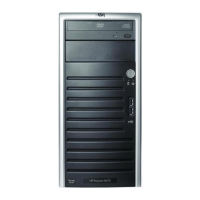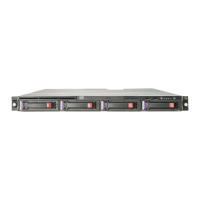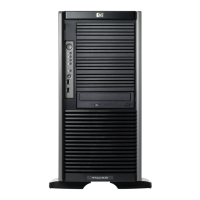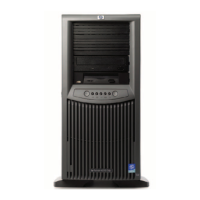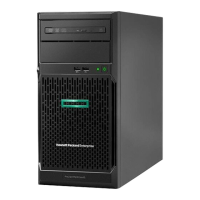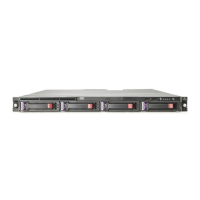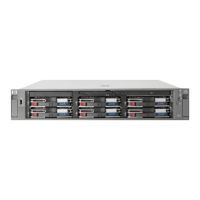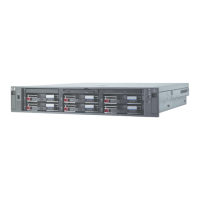type is impor tant. The same performance characteristics on numbers of
reads and writes apply when using fault tolerant configurationsasisthe
case with controller-based RAID. These volumes can also be assigned drive
letters or be mounted as mount points off existing drive letters. In general,
HP recommends using the array controller for the management of fault
tolerance over the use of Windows Storage Server 2003 software RAID
because it places an additional level of operating system overhead on
volumes. If mount points are used, please note that they are not supported
by SFU at this time.
The administrator should carefully consider how the volumes will be car ved
up and what groups or applications will be using them. For example,
putting several storage-intensive applications or groups into t he same
dynamic disk set would not be efficient. These applications or groups
wouldbebetterservedbybeingdividedupintoseparatedynamicdisks,
which could then grow as their space requirements increased, within the
allowable growth limits.
NOTE:
Dynamic disks cannot be used for clustering configurations because
Microsoft Cluster only supports basic disks.
More detailed information regarding the WebUI for disk management
activities can be found in the HP P roLiant Storage Server administration
guide.
File system elements
File system elements are composed of the folders and subfolders that are
created under each logical storage element (partitions, logical disks, and
volumes). Folders are used to further subdivide the available file system,
providing another level of granularity for management of the information
space. Each of these folders can contain separate permissions and share
names that can be used for network access. Folders can be created for
individual users, groups, projects, and so on.
Detailed information on file system elements can b e found in the
administration guide.
File sharing elements
The storage server suppor ts several file sharing protocols, including
Distributed File System (DFS), Network File Sy stem (NFS), File Transfer
Protocol (FTP), Hypertext Transfer Protocol (HTTP), and M icrosoft Server
Message Block (SMB). On each folder or l ogical storage element, different
38 Storage management overview
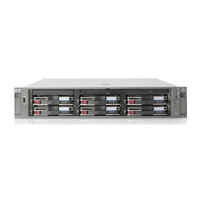
